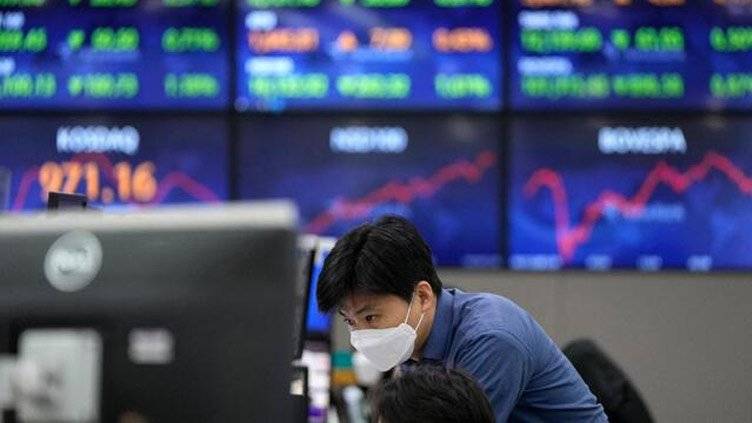Asian shares tracked Wall Street higher on Thursday, buoyed by signals the U.S. Federal Reserve may slow the pace of interest rate hikes and news of fresh economic stimulus from China, with the dollar failing to recoup losses.
MSCI’s broadest index of Asia-Pacific shares outside Japan (.MIAPJ0000PUS) rose 0.8% in early trade, boosted by a 0.6% gain in South Korean shares, a 0.5% increase in China’s bluechips (.CSI300) and a 0.9% jump in Hong Kong’s Hang Seng index (.HSI.)
Japan’s Nikkei (.N225) surged 1.3%.
S&P 500 futures were up 0.2%, while Nasdaq futures <NQc1> rose 0.3%, after modest gains in U.S. stocks on Wednesday.
On Thursday, Bank of Korea slowed down the pace of tightening to a more modest 25 basis points, joining other central banks that have downshifted away from outsized hikes amid a looming global recession.
Minutes of the U.S. Federal Reserve’s last meeting also showed a "substantial majority" of Fed policymakers agreed it would "likely soon be appropriate" to slow the pace of interest rate hikes.
"In all, it is clear from the minutes that FOMC participants are determined to further raise the policy rate in the face of a very tight labour market and unacceptably high inflation," said analysts at Barclays.
"However, the minutes also reveal an emerging divergence of views among members about the peak rate, and uncertainty about the peak rate."
The futures market implies a 76% chance of a rise of 50 basis points to 4.25%-4.5% at the December meeting, while a majority of investors expect the target U.S. federal funds rate will peak above 5% by next May.
U.S. economic data on Wednesday showed jobless claims increased more than expected last week, while business activity contracted for a fifth month in November.
In Japan, data on Thursday showed manufacturing activity contracted at the fastest pace in two years in November.
Meanwhile, in China, COVID cases continued to surge, with the economic toll from mobility restrictions and lockdowns piling up.
China’s cabinet on Wednesday flagged the possibility of an upcoming cut to banks’ reserve requirement ratio (RRR), pledging new stimulus measures to revive its COVID-battered economy.
The U.S. dollar on Thursday failed to recoup overnight losses of 1% with the index standing at 105.89 against a basket of currencies.
In the oil market, prices are set to test a major support level from September, which if breached could see oil tumbling to levels not seen before late 2021, adding to the evidence that inflation likely has started coming down.
U.S. crude oil futures eased 0.2% to $77.79 per barrel, after tumbling more than 3% on Wednesday, as the Group of Seven (G7) nations considered a price cap on Russian oil above the current market level.
Brent crude futures fell 0.15% to $85.26.
In the bond market, long-term U.S. Treasuries rallied overnight after the Fed minutes. Yields on 10-year notes dropped to a huge 79-basis-points deficit to two-year yields, a curve inversion on a scale not seen since the dot.com bust of 2000 and, on the face of it, a signal investors expect a deep economic downturn in coming months.
U.S. markets are closed for the Thanksgiving holiday on Thursday.






